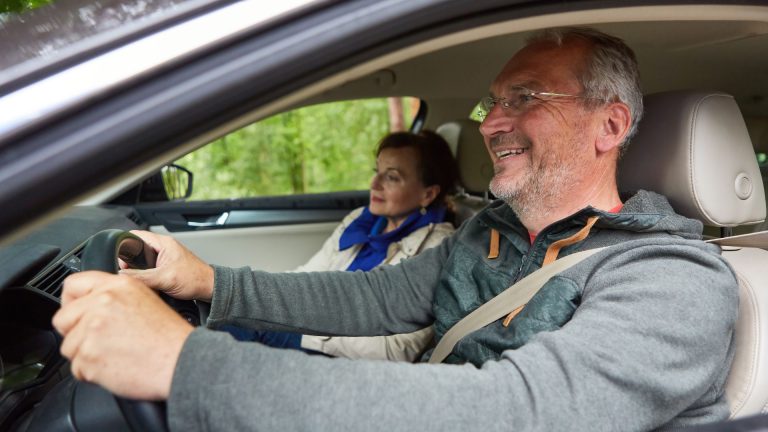
Retirement is a time of exciting change, a chance to redefine what matters most, reimagine your lifestyle, and simplify your routines. One major shift many retirees consider is downsizing their household, and that often includes a big question: Do we still need two cars?
If you’re gearing up for a more relaxed, travel-filled retirement or just aiming to cut down on costs and clutter, transitioning from two vehicles to one could be a smart move.
Why Downsizing Makes Sense in Retirement
Lower Costs = More Freedom
When you crunch the numbers, owning a car isn’t cheap. Insurance, maintenance, registration fees, gas, and repairs add up quickly, especially with two vehicles. Reducing to one car could save you thousands of dollars each year. That’s money that could be better spent on weekend getaways, bucket-list road trips, or simply enjoying a more relaxed lifestyle.
Less Maintenance and Responsibility
Retirement means less hustle, so why hold onto double the responsibility? Maintaining one vehicle is significantly easier due to fewer oil changes, tire replacements, inspections, and surprise repairs. This translates to less stress and more time to do what you enjoy.
Shifting Lifestyles and Daily Routines
Your schedules are more flexible now. You no longer need to juggle commutes, work meetings, or school pickups. Retired couples often find they naturally do more activities together, or can plan their errands and appointments around a single vehicle.
Vehicles that are still in high demand include trucks, midsize SUVs, and fuel-efficient models from the past five years. These tend to sell quickly, and their values are holding up well. In contrast, older vehicles—especially those manufactured before 2013—are beginning to decline in value as more inventory returns to the market.
Luxury vehicles are also seeing sharper depreciation. As new models continue to include advanced driver assistance systems and other high-tech features, older luxury cars can seem outdated by comparison, causing their resale value to fall more rapidly.
Planning the Transition: Questions to Ask First
Before turning in the keys to one of your vehicles, it’s important to assess whether downsizing is the right choice for your lifestyle.
How often do we both need a car at the same time?
Track your driving habits for a month. Are both cars being used daily, or is one sitting idle most of the time?
Are we located in a walkable or transit-friendly area?
If you live in a city, near public transportation, or within walking distance to essentials, one car may be more than enough. Rural retirees may want to think twice before letting go of their second vehicle.
Do we travel frequently?
Retirees who spend months traveling between states may find that only one car is needed at a time. Some retirees find themselves using rental cars or RVs instead when they’re on the move.
Are we comfortable sharing a vehicle?
Be honest about your personalities and preferences. Some couples enjoy the simplicity of one shared car; others may find it too constraining. Clear communication is key.
Downsizing with a Road Trip in Mind
Here’s where it gets fun: downsizing doesn’t just have to be practical, it can be adventurous. Many retirees use the transition as an opportunity to road test (literally) their ideal post-retirement lifestyle. Think of it as your “road trip to retirement,” a trial run for living lighter.
The Road Trip Test
Pick a week or weekend when you only use one car. See how it feels. Plan a mini road trip or even a staycation with the vehicle you plan to keep. This gives you a chance to:
- See how well the vehicle performs on longer trips.
- Gauge comfort, trunk space, and fuel efficiency.
- Experience what life with one car would look like.
You’ll quickly learn what you like—and don’t—about relying on a single vehicle.
The Emotional Side of Letting Go
For many people, cars carry emotional value. Maybe your second vehicle is the one you bought after a big promotion. Perhaps it was your weekend escape car or the one you took on family road trips. Parting with it can feel like closing a chapter.
Allow yourself to feel nostalgic. Reflect on the memories, but also embrace the freedom that comes with simplifying. Downsizing isn’t about loss; it’s about creating space for new adventures.
How to Choose Which Car to Keep
If you’ve decided to downsize, the next big question is: Which vehicle stays, and which one goes?
Here are a few factors to consider:
- Age and mileage: Newer cars with lower mileage are often more reliable and cost-effective long-term.
- Fuel efficiency: If you’re planning more road trips, a fuel-efficient model can save money on gas.
- Comfort and accessibility: Consider ease of entry, seat comfort, visibility, and storage, especially as mobility becomes more important.
- Maintenance history: Keep the car that’s been more reliable and cheaper to maintain.
- Towing capacity or cargo needs: If you’re planning on RV travel or hauling gear, make sure your remaining car can handle the load.
Sometimes the “better” car isn’t the one with the highest resale value; it’s the one that suits your lifestyle best.
Tips for Making the One-Car Lifestyle Work
Transitioning from two cars to one doesn’t have to be restrictive. With a little planning, it can be surprisingly freeing.
Create a shared calendar
Schedule errands, appointments, and trips in a shared digital calendar so you’re always on the same page about car availability.
Use ride-share services as a backup
Need to be in two places at once? Services like Uber or Lyft can be your temporary second car. Even if used occasionally, it’s far cheaper than maintaining a second vehicle.
Embrace the journey together
Downsizing to one car often means doing more things as a couple. Whether it’s grocery shopping, visiting the grandkids, or heading out on a new road trip, lean into the extra time together.
Keep the remaining car in top shape
Now that your remaining car is your main vehicle, invest in routine maintenance and inspections to keep it reliable and road-ready.
Looking Ahead: The Joy of Less
Downsizing from two cars to one is more than a financial or logistical decision; it’s a lifestyle choice. It’s about reducing clutter, minimizing stress, and making room for what matters in retirement: freedom, flexibility, and time well spent.
It’s also about embracing the idea that less really can be more. With fewer responsibilities and fewer expenses, you create space for more travel, more experiences, and more meaningful time together.
Whether you’re planning epic cross-country road trips or simply looking forward to quiet days closer to home, choosing to live with one car might just be the easiest and smartest step toward a smoother, simpler retirement.
